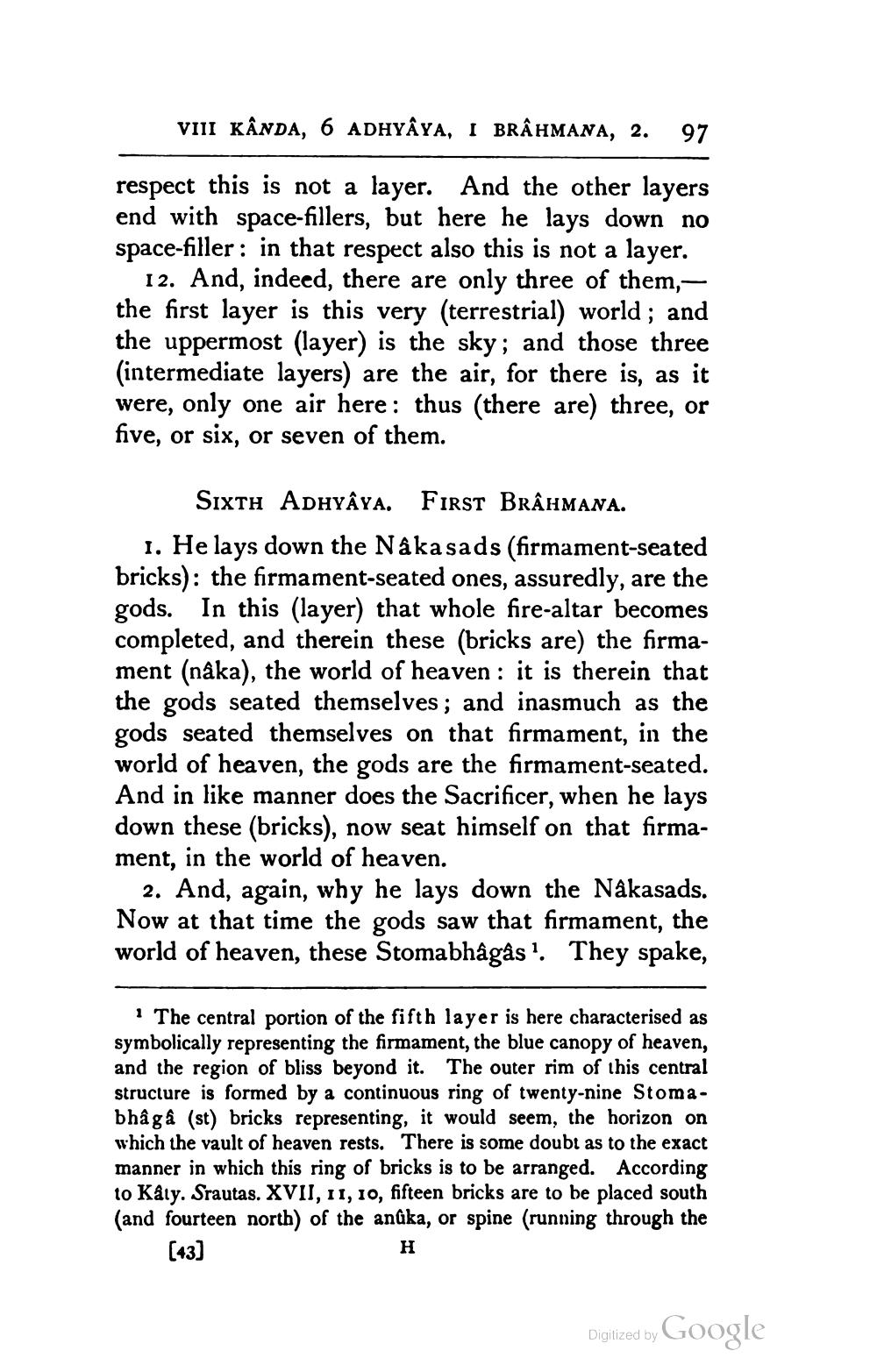________________
VIII KÂNDA, 6 ADHYAYA, I BRÂHMANA, 2.
97
respect this is not a layer. And the other layers end with space-fillers, but here he lays down no space-filler : in that respect also this is not a layer.
12. And, indeed, there are only three of them, - the first layer is this very (terrestrial) world; and the uppermost (layer) is the sky; and those three (intermediate layers) are the air, for there is, as it were, only one air here: thus (there are) three, or five, or six, or seven of them.
Sixth ADHYAYA. FIRST BRÂHMANA. 1. He lays down the Nâka sads (firmament-seated bricks): the firmament-seated ones, assuredly, are the gods. In this (layer) that whole fire-altar becomes completed, and therein these (bricks are) the firmament (nåka), the world of heaven: it is therein that the gods seated themselves; and inasmuch as the gods seated themselves on that firmament, in the world of heaven, the gods are the firmament-seated. And in like manner does the Sacrificer, when he lays down these (bricks), now seat himself on that firmament, in the world of heaven.
2. And, again, why he lays down the Nâkasads. Now at that time the gods saw that firmament, the world of heaven, these Stomabhâgâs? They spake,
1 The central portion of the fifth layer is here characterised as symbolically representing the firmament, the blue canopy of heaven, and the region of bliss beyond it. The outer rim of this central structure is formed by a continuous ring of twenty-nine Stomabhâ gå (st) bricks representing, it would seem, the horizon on which the vault of heaven rests. There is some doubt as to the exact manner in which this ring of bricks is to be arranged. According to Kaly. Srautas. XVII, 11, 10, fifteen bricks are to be placed south (and fourteen north) of the anûka, or spine (running through the
[43]
Digitized by Google




